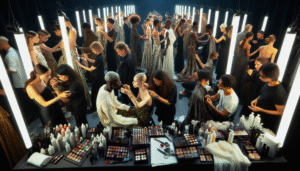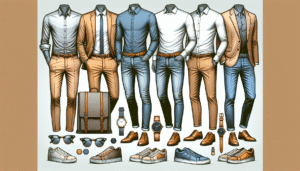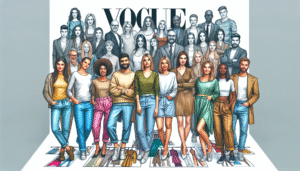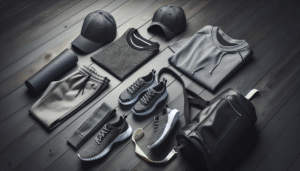
Fashion’s Future is Circular: Reshaping the Industry for Sustainability
The Problem with Linear Fashion: The traditional fashion industry operates on a linear “take-make-dispose” model. Raw materials are extracted, transformed into garments, used briefly by consumers, and then discarded, often ending up in landfills. This system places immense strain on natural resources, generates significant pollution, and contributes to climate change. The fashion industry is estimated to be responsible for up to 10% of global carbon emissions and 20% of industrial wastewater pollution. Fast fashion exacerbates this problem, churning out cheap, trendy clothing with short lifespans, further fueling the cycle of consumption and waste.
The Circular Economy Solution: The circular economy presents a powerful alternative to this unsustainable model. It aims to keep materials in use for as long as possible, minimizing waste and maximizing resource efficiency. In a circular fashion system, clothes are designed for durability, repairability, and recyclability. They are produced using sustainable materials and processes, and after their first life, they are reused, repaired, or recycled to create new products, closing the loop.
Key Elements of Circular Fashion:
- Sustainable Materials: Sourcing materials with minimal environmental impact is crucial. This includes using organic cotton, recycled fibers, innovative bio-based materials like mushroom leather and pineapple leaf fiber, and exploring closed-loop recycling systems for existing materials.
- Design for Longevity: Creating durable, timeless garments designed to last longer reduces the need for frequent replacements. This involves high-quality construction, classic styles, and modular design that allows for easy repairs and updates.
- Slow Fashion Movement: Embracing the slow fashion movement encourages consumers to buy fewer, higher-quality items and value craftsmanship and ethical production. This shift in mindset moves away from fast fashion’s fleeting trends and emphasizes mindful consumption.
- Reuse and Resale: Extending the life of garments through resale platforms, clothing swaps, and vintage shopping reduces the demand for new products and keeps existing clothing in circulation. This encourages a culture of sharing and reuse.
- Repair and Upcycling: Repairing damaged clothing and upcycling old garments into new items reduces waste and gives clothes a second life. This fosters creativity and resourcefulness, extending the value of existing materials.
- Closed-Loop Recycling: Developing advanced recycling technologies that can break down textiles into their constituent fibers and create new, high-quality materials from them is critical for achieving true circularity. This minimizes the need for virgin resources and reduces textile waste.
The Role of Technology in Circular Fashion:
- AI and Data Analytics: Artificial intelligence can optimize design and production processes, predict consumer demand, and improve inventory management, reducing waste throughout the supply chain.
- Blockchain Technology: Blockchain can enhance transparency and traceability in the supply chain, ensuring ethical sourcing and responsible production practices. It can also help verify the authenticity of recycled materials.
- 3D Printing and Digital Design: 3D printing allows for on-demand production, minimizing waste and enabling customized designs. Digital design tools facilitate virtual prototyping and sampling, reducing the need for physical samples.
Challenges and Opportunities:
Implementing circular fashion faces several challenges, including the complexity of textile recycling, the need for infrastructure investments, and consumer behavior change. However, the opportunities are significant. Circular fashion can create new economic opportunities, reduce environmental impact, and enhance brand reputation.
Industry Initiatives and Collaborations:
Numerous brands, organizations, and initiatives are driving the transition to circular fashion. The Ellen MacArthur Foundation’s Make Fashion Circular initiative promotes collaboration and innovation across the industry. Brands like Patagonia and Eileen Fisher are pioneering circular business models, offering repair services, take-back programs, and using recycled materials.
The Consumer’s Role in Circular Fashion:
Consumers play a crucial role in driving the shift towards circularity. Choosing sustainable brands, buying less, caring for clothes properly, repairing and upcycling, and participating in resale markets are all important steps towards a more sustainable fashion future.
Policy and Regulation:
Government policies and regulations can incentivize circular practices, such as extended producer responsibility schemes, which hold producers accountable for the end-of-life management of their products. Supporting research and development in textile recycling and promoting sustainable sourcing practices are also essential.
The Future of Fashion:
The future of fashion is undeniably circular. As awareness of the environmental and social impacts of the linear model grows, the demand for sustainable and ethical fashion increases. By embracing circular principles, the fashion industry can transform itself into a more responsible and resilient sector, contributing to a more sustainable future for all.















